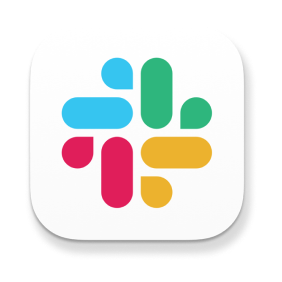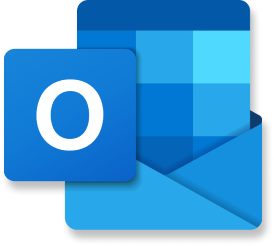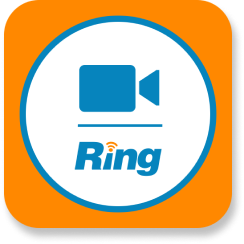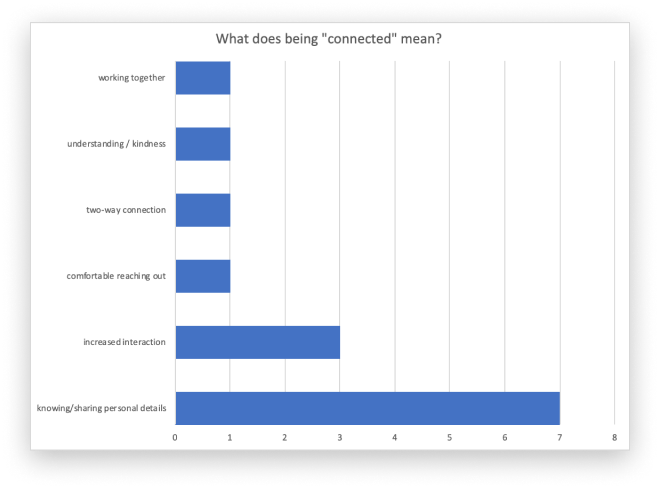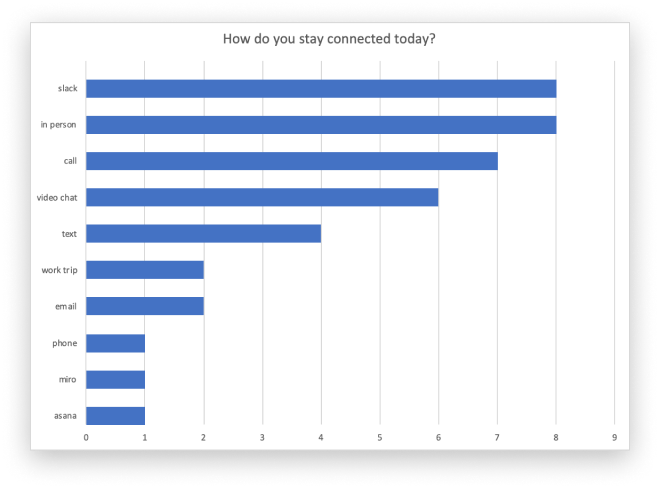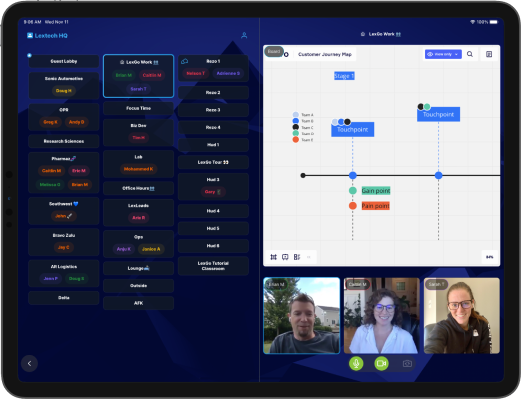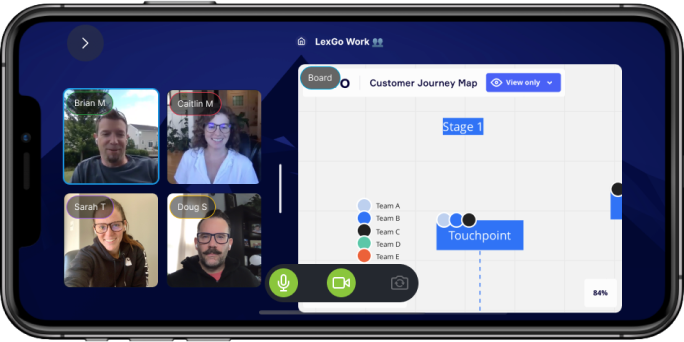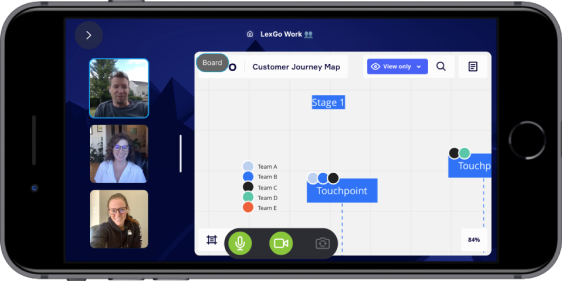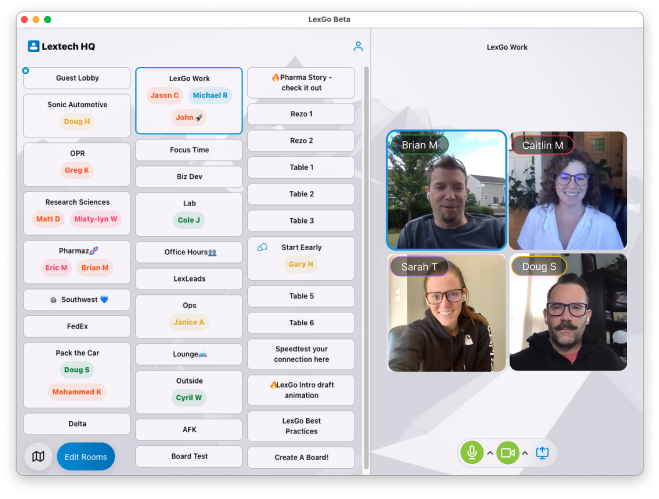LexGo
Virtual Office
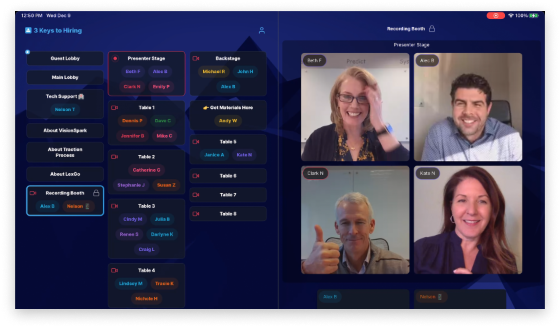
Passion turned product
Before the pandemic, I had been working mostly remote for a couple years, though I’d always been
frustrated with the current crop of tools needed to stay connected. Slack + Email +
Zoom/RingCentral/WebEx had a lot of friction points. When the pandemic came, our CEO decided it
was time to go fully remote, and with that, he had a renewed interest to solve our connectedness
problem. I literally jumped at the chance to work on the project. I was the design
lead, and worked with a visual designer.
Too many communication channels made connecting a chore
Product vision
Before we decided what to build, we had to decide what problems we were solving for. We settled
on 3 main goals for the product: Presence, Instant Conversation, and Connectedness.

Presence
In a fully remote world, knowing who’s around, who’s busy, and who’s available is critical to smoothly
running operations.

Instant Conversation
When it’s time to have a conversation, creating and sending an invite to a video conference is wrought
with pain points: managing invites link, then attaching it to a meeting invite, people losing
it. We wanted to join and room and be in a conversation with a single click, with no invites
or personal codes.

Connectedness
How do you stay connected, personally, with your coworkers if you never see them in
person? How do you meet new coworkers? How do you maintain company culture in a
disconnected, remote office?
Eating our own dogfood
Even though this was an internal-only project, I wanted to make sure we still followed good design
processes that we use to deliver great results for our clients. I started with a workshop,
conducted fully remotely of course. Presence and instant conversations seemed straightforward,
but what does being “connected” mean to everyone? In addition, I also dug deep into what
people’s pain points were with the current solutions. In Jobs To Be Done parlance, what would
make them fire their current communication tool and hire a new one?
“I get interrupted too much on Slack”
- Developer
“If I am reaching out, I need a fast response”
- CEO
“If I wait a day, the message is going to get lost”
- Product Owner
“If I spend my entire day looking through Slack channels, I won’t get very far”
- Project Lead
“How do I get my heads down time if I’m always having to check for messages?”
- Designer
“I dont want to send 15 msgs when I could just explain it in 2 minutes”
- Product Owner
Bootstrapping
With quick and dirty research done, and the clock always against us, we had to be nimble with
designs so the devs could iterate quickly on the tech. The first designs were as simple as
possible to make the tech exploration as quick as possible. We started on the browser, so I
designed a no-frills, column-based layout to make it easy to implement.
The very first iteration of LexGo
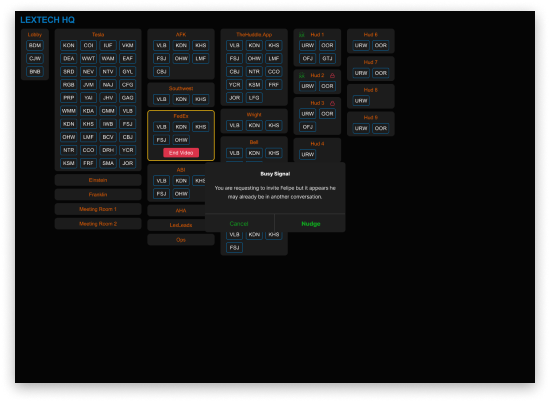
Goal check
The first iteration was functional, and did provide a limited type of presence, but because we were using
Zoom as the video service, the connection wasn’t instant. You still had to click multiple
times: once to get into the room, another time to start the zoom meeting, then click to turn on camera and
mic. 4 clicks was 3 too many. We ripped out the Zoom backend and started over with
Twilio, and we’re able to get videos displayed inline, with greater control over the layout, and most
importantly, single-click conversations.
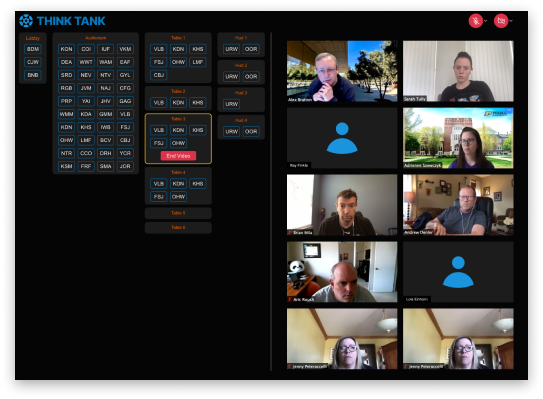
Videos inline and single click conversations
Days Not Weeks
With the first two goals tackled, we started on the most challenging
goal: connectedness. We experimented with roomless concepts, variations in how to
organize the people, and different ways to present the videos to see if any of them might make people feel
more connected. After hundreds of iterations we still felt like we were just pills on a
screen. We decided to go back and take another look at our research to see if we missed anything.
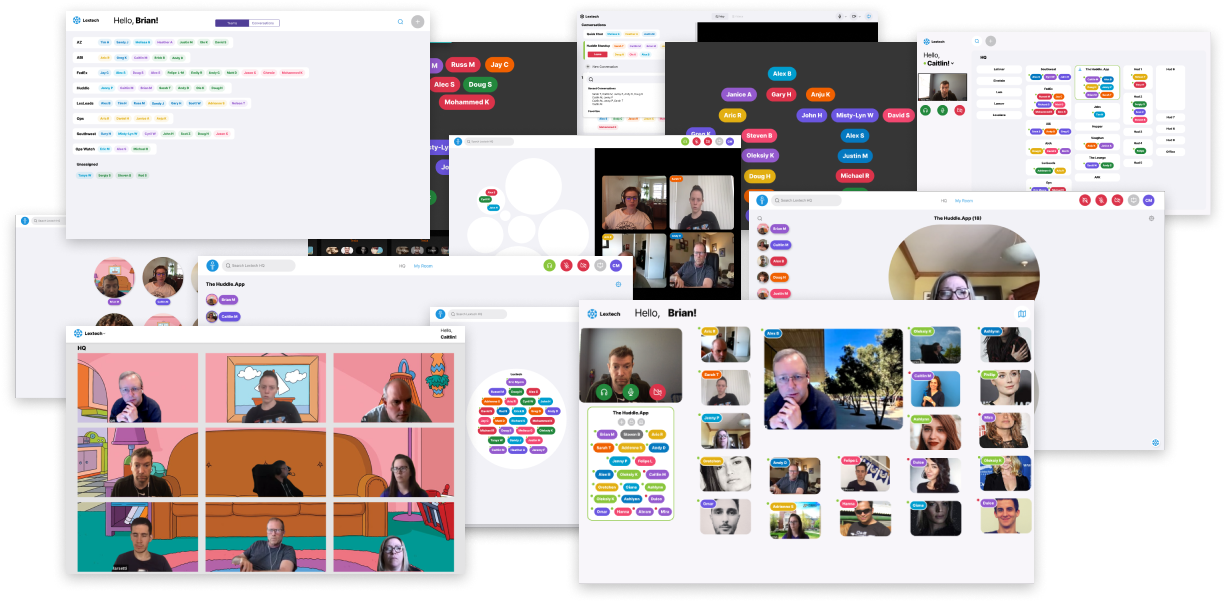
The golden thread
It was clear from our workshop results that it was difficult to determine exactly what being connected to
someone else meant. It meant different things to different people. But one clear
thread existed: knowing and sharing personal details made people feel more connected,
regardless of how they defined “connected.”
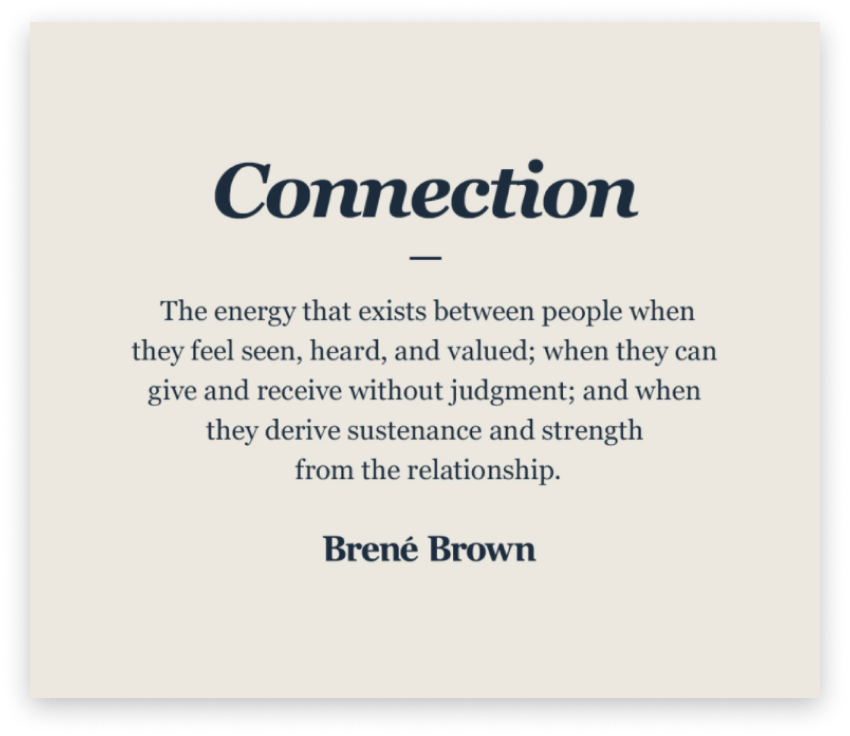
Sharing is caring
We switched focus from the technology to the people, and we started designing features that would allow
people to share information about themselves. Every week they would be prompted to answer a new
question. Once they answered it, they’d be able to see who else in the company had a similar
answer. Over time, they’d build up a profile of what interests them, and more importantly, how
those interests connect them to other people. We even designed gamification concepts, where
there would be a monthly quiz and people could win points or prizes based on how much they knew about
their coworkers.
“Life's too short to build something nobody wants.”
― Ash Maurya
Productization
Shortly after we finished our designs on connectedness, the CEO made the decision to productize
it. It was a bittersweet moment. It was a great chance for the work we did to be
experienced by others, but it also meant that we didn’t get to design what we wanted, we had to design what
the market wanted. And the market didn’t want connectedness, so it got cut from the
product. LexGo is still a great tool and I still believe the best way to run a fully remote
office, but the current focus is on running virtual events, which is a whole different set of problems to
design for.

